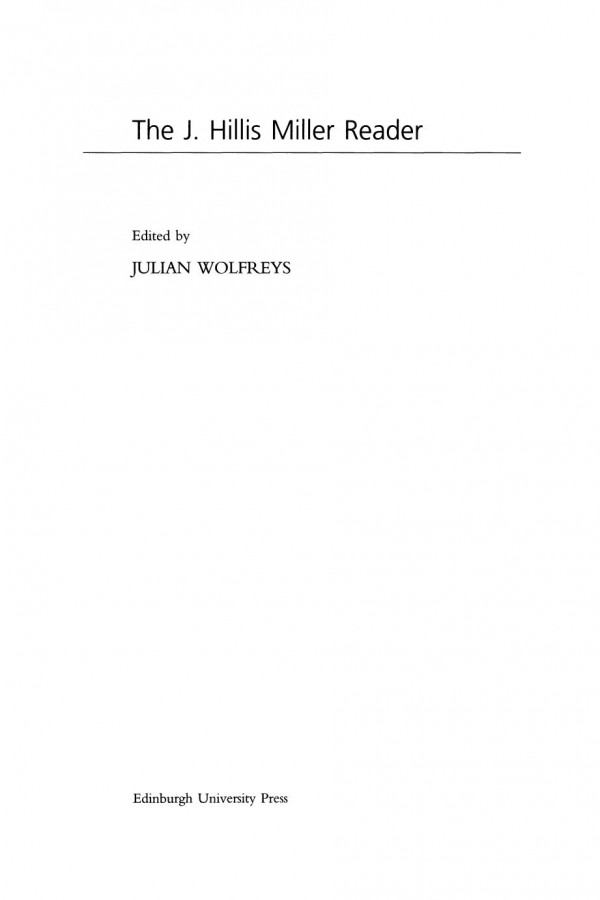

Most ebook files are in PDF format, so you can easily read them using various software such as Foxit Reader or directly on the Google Chrome browser.
Some ebook files are released by publishers in other formats such as .awz, .mobi, .epub, .fb2, etc. You may need to install specific software to read these formats on mobile/PC, such as Calibre.
Please read the tutorial at this link: https://ebookbell.com/faq
We offer FREE conversion to the popular formats you request; however, this may take some time. Therefore, right after payment, please email us, and we will try to provide the service as quickly as possible.
For some exceptional file formats or broken links (if any), please refrain from opening any disputes. Instead, email us first, and we will try to assist within a maximum of 6 hours.
EbookBell Team

4.7
36 reviewsThis anthology represents the diversity, inventiveness, and intellectual energy of J. Hillis Miller, the single most significant North American literary critic of the twentieth century. First published in the 1950s, Miller has continued to make invaluable contributions to our understanding of the practice and theory of literary criticism, the ethics and responsibilities of teaching and reading, and the role of literature in the modern world. He has also led the way for successive generations of scholars and students in demonstrating the necessity of comprehending the relationship between philosophy and literature.
Divided into five sections - The Ethics of Reading, Victorian Interests, Twentieth-Century Occasions, Practice and Theory, Pedagogical and Political Commitments - the Reader provides more than twenty extracts from some of Miller's most significant publications including one unpublished article. In addition, there is also a new interview with J. Hillis Miller, as well as a series of specially commissioned critical responses to Miller's work by some of the most important critics in literary and cultural studies today. A critical introduction by the editor, a comprehensive bibliography and a chronology of Miller's professional life and activities complete the book.
This, the first reader of Miller's work in English, is an indispensable overview and introduction to one of the most original and challenging critical voices to have emerged since the inception of the teaching of English and American literature in universities in the English-speaking world.
Features